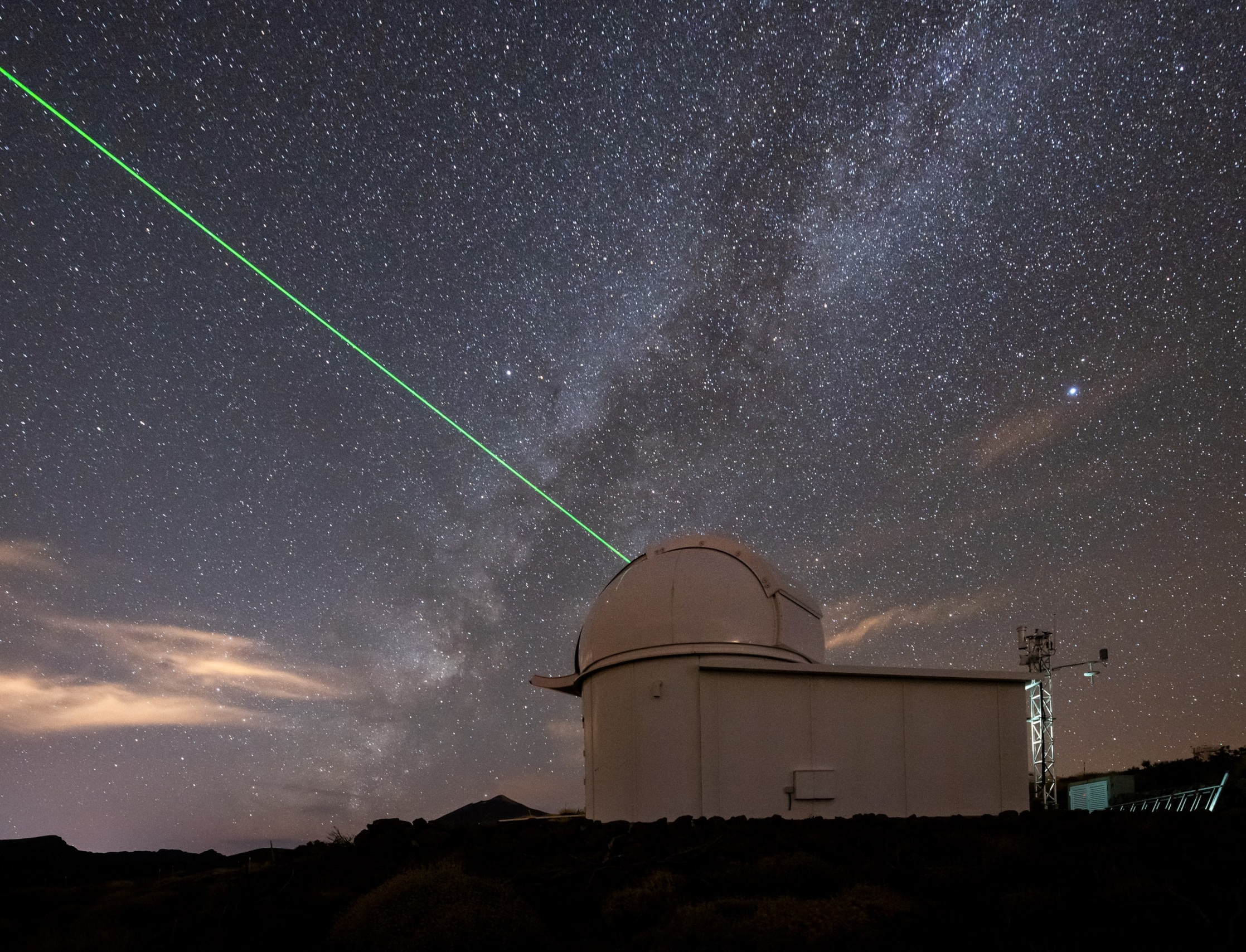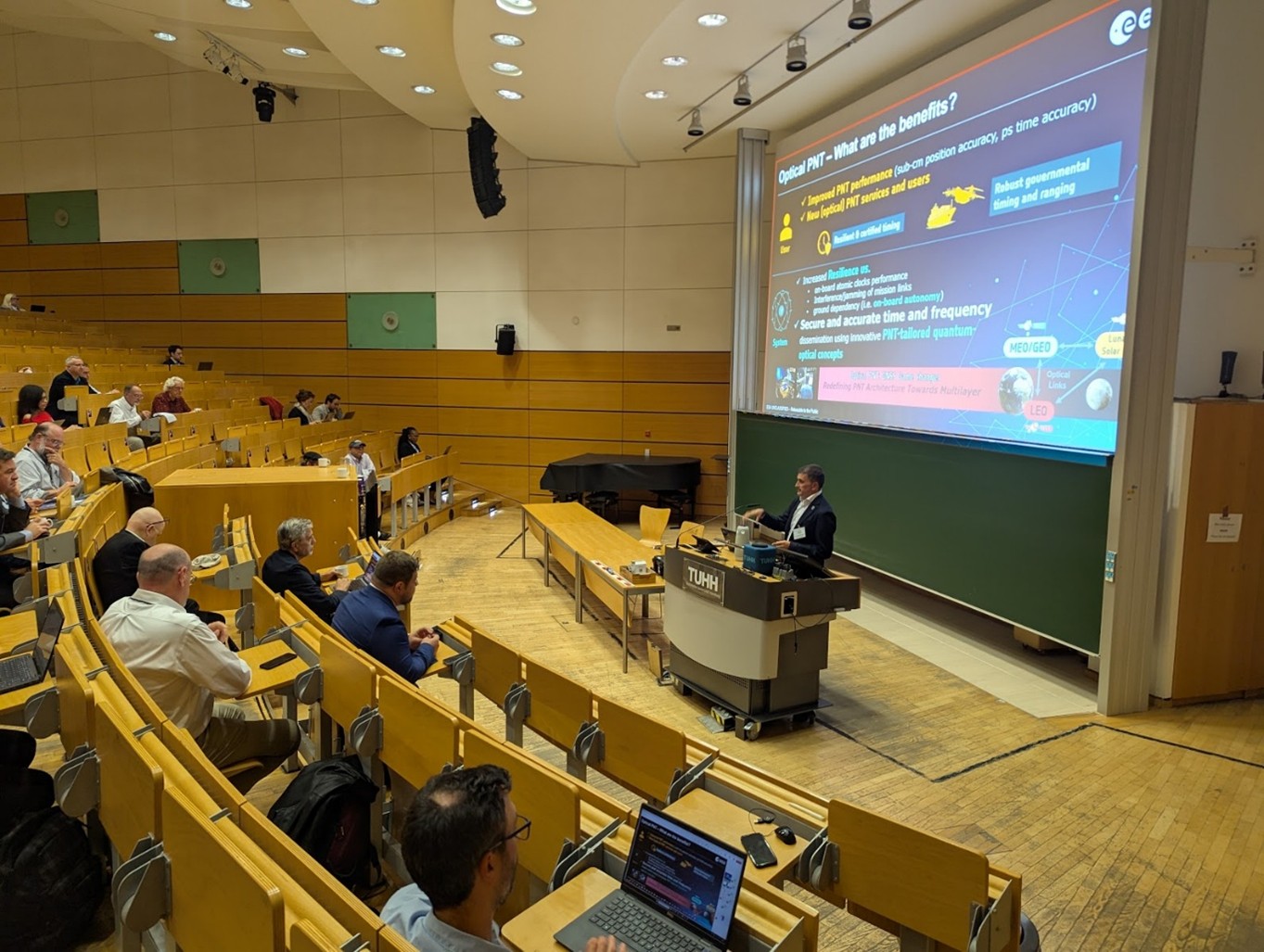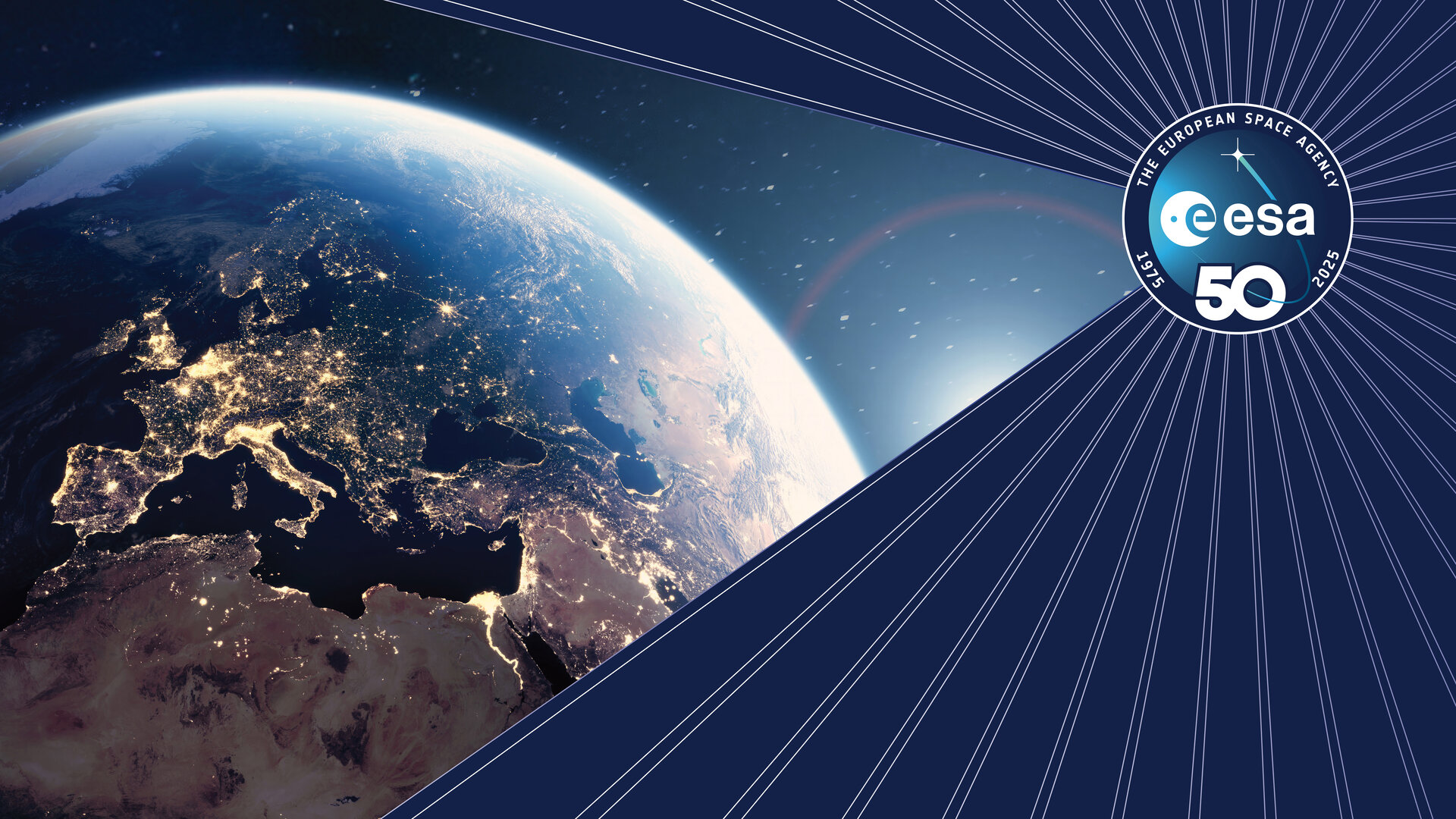The European Optical Nucleus Network
The European Optical Nucleus Network (ONN) is a European agency-industry collaboration that aims to offer data rates between satellites and the ground as much as 10 times higher than traditional radio communications. It will be the first operational optical communication ground station network service of its kind made available to the market.
ONN Workshop at ESOC
Last week, the ONN members (ESA, DLR and KSAT), several optical ground station suppliers, and two other optical ground station operators – SSC and Leafspace – met at ESA’s ESOC operations centre to discuss the latest advances in optical ground station technology.
Other topics covered at the workshop include the cost-competitiveness of optical communication, and new industrial opportunities for optical space-to-Earth communication for satellites in low-Earth orbit and at the Moon. Quantum Key Distribution was also proposed as a future ideal service provided by such a network and its feasibility will be analysed. Participants also received an update on the current status of the Network’s implantation and heard from operators of optical ground stations interested in joining the Network.
Several fruitful discussions confirmed the interest from European industry to continue the development of the ground segment for a mature service, filling the few remaining technological gaps towards a common implementation baseline. In addition to ground segment technology, the space segment is ready, with several laser terminals options available on the market.
A joint final brainstorming between ESA and participating entities highlighted the importance of ESA’s role in gathering industry and establishing an industrial ecosystem for ground and space technology. Industry in turn should be open to cooperation and partnership. The need to also involve potential ONN customers was raised – satellite operators can provide valuable feedback to better focus efforts for a rapid development according to market needs.
With the proven advancement of optical ground station technology and laser communication space terminals in Europe, and with the advent of common standards on optical communications, we have reached the ideal conditions to trigger a concrete first use case and it is expected that with such a champion, we may soon enter the era of optical communication.
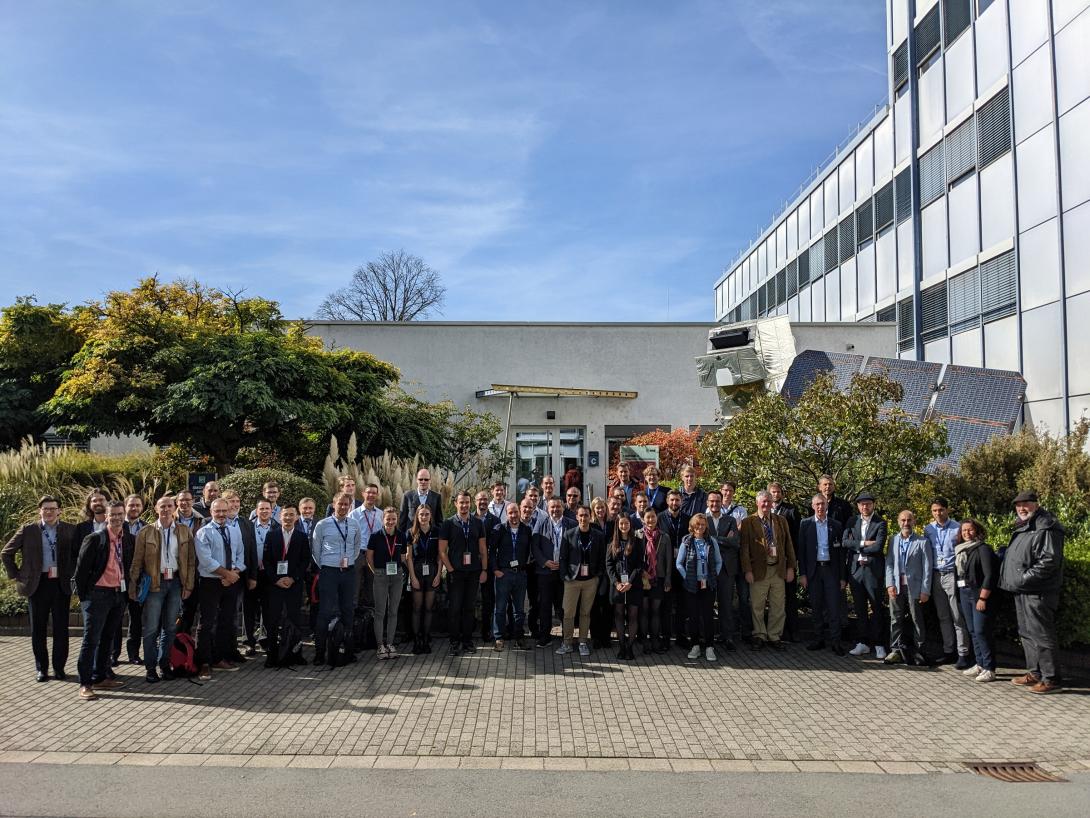
Image: ESA
Optical communication – fibre optic data speeds for satellites
With the advent of fibre optic technology on Earth, terrestrial data transmission capacity reached impressive new speeds. But data rates between spacecraft and ground stations are still limited by the capacity of radio communications and need to increase significantly in order to enable new applications.
Future Earth observation missions in low-Earth orbit, such as those of the EU Copernicus programme, will achieve gigabit-per-second data rates using the latest in radio communication technology. But stakeholders are increasingly looking to optical solutions that could offer rates of over 10 gigabits per second.
The current limiting factor is the lack of a reliable operational ground segment. This ground segment would need to be able to receive data at multiple locations on Earth to avoid signal disruption caused by local cloud cover. It would also need to integrate the received data into a cloud-based infrastructure and make it available to end users in near real-time – all while maintaining cost competitiveness with traditional radio frequency services.
The European Optical Nucleus Network is an initiative between European space agencies and industrial partners to overcome achieve this. The aim is to establish a multi-site, multi-mission network with common technological standards in which network participants contribute a portion of the availability of their optical ground stations to an integrated network. This availability is then made available to the space community as a service.
The initial Nucleus Network consists of optical ground stations from ESA on Tenerife, Spain, the German Aerospace Center (DLR) in Almeria, Spain, and Kongsberg Satellite Services (KSAT) in Nemea, Greece. All three stations have been connected to the KSAT Network Operations Center in Tromsø, Norway, which also controls KSAT’s 200 radio antennas at 22 sites around the globe. From a user perspective, this allows for a single point of contact and removes the need to manage multiple sites and interfaces.
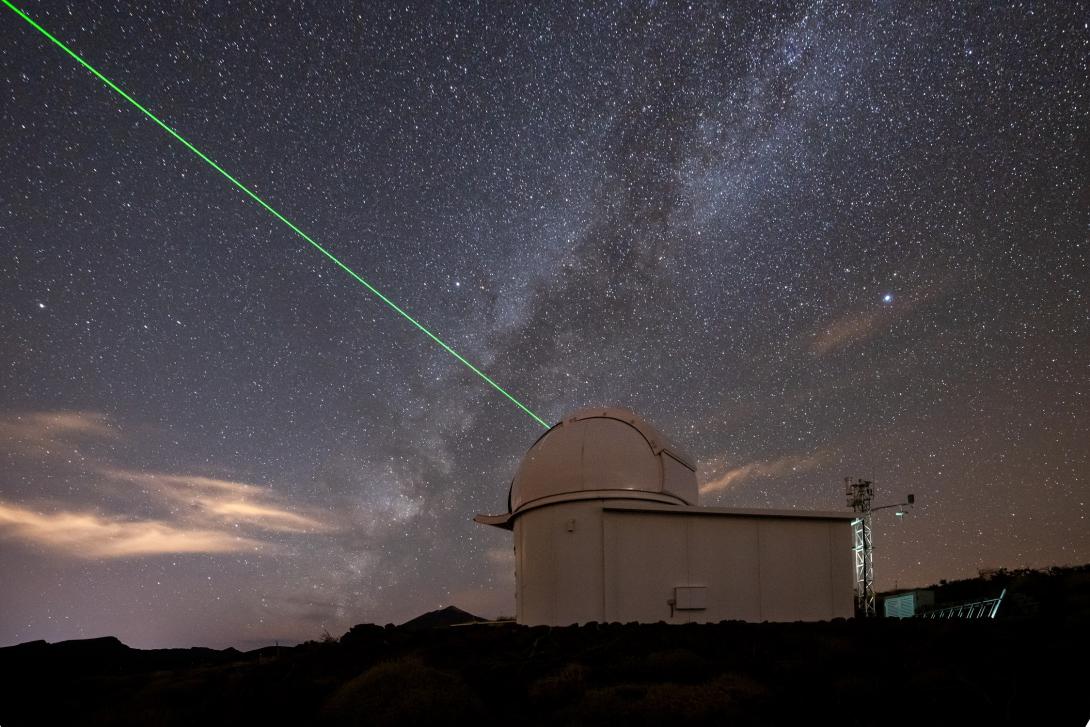
Image: ESA
Establishing the network required overcoming challenges such as the lack of consistent technological standards and the use of different proprietary components between stations. To solve this, the network developed a ground station design that focuses on the use of commercial-off the-shelf components, where available, to build stations that are cost effective compared to radio solutions. The capacity for remote and automated operation is also a core element.
The Network partners are currently gathering operational experience that will enable them to guarantee a stable service that can compete with radio communications. The satellite NorSat-TD (Technology Demonstrator) developed by the Norwegian Space Agency, scheduled for launch at the beginning of 2023, will allow the full validation of the network, thanks to its laser communication terminal “CubeCat” from TNO. Once the market develops, the network can quickly be expanded globally based on the experience gathered from these steps.
In addition to missions in low-Earth orbit, the Network also aims to support future lunar missions. For missions at the Moon, optical communication solutions are far more cost-efficient than traditional radio communications solutions as optical communication packages on satellites are more compact and help minimise the overall satellite mass for the same or increased data rates.

